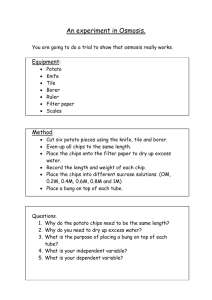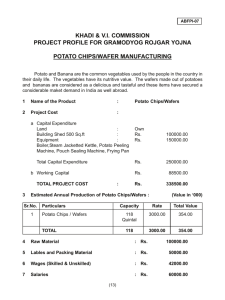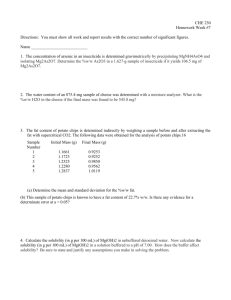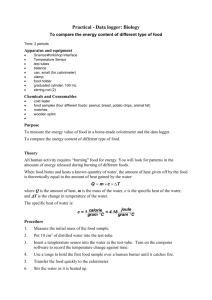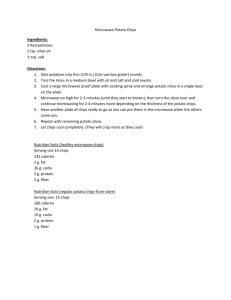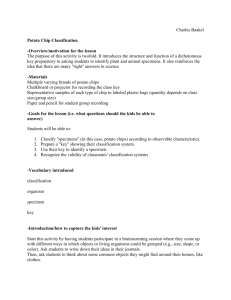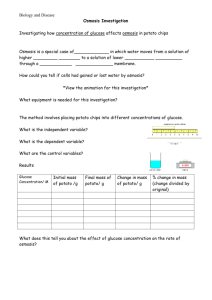Document
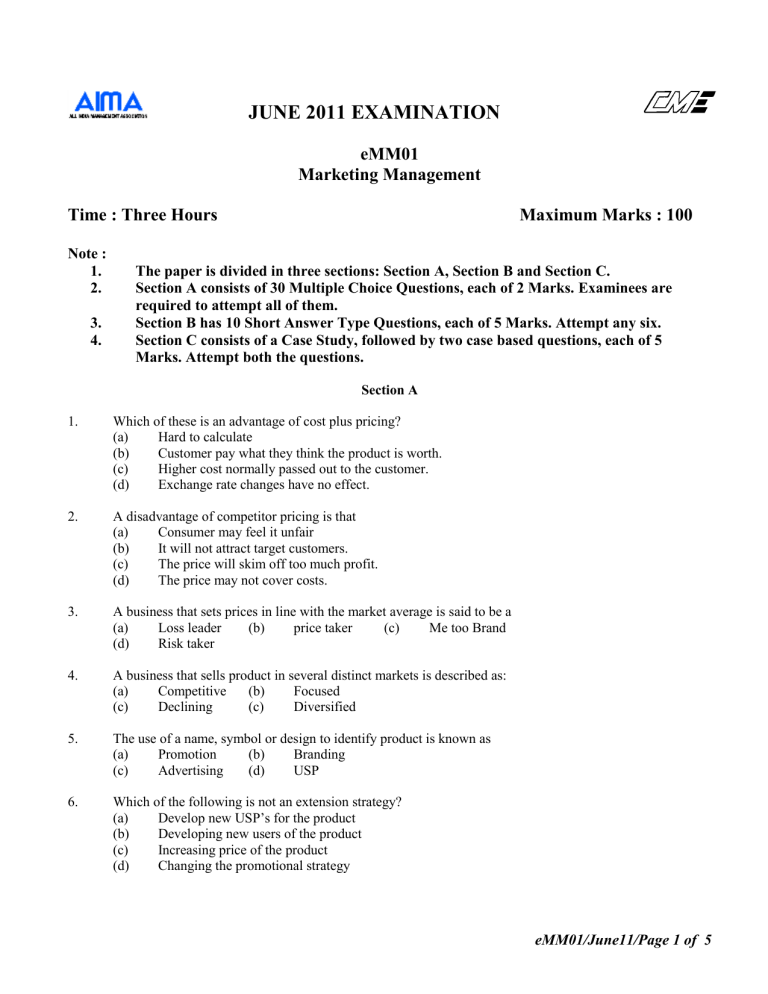
JUNE 2011 EXAMINATION
eMM01
Marketing Management
Time : Three Hours Maximum Marks : 100
6.
3.
2.
1.
4.
5.
Note :
1.
The paper is divided in three sections: Section A, Section B and Section C.
2.
Section A consists of 30 Multiple Choice Questions, each of 2 Marks. Examinees are required to attempt all of them.
3.
Section B has 10 Short Answer Type Questions, each of 5 Marks. Attempt any six.
4.
Section C consists of a Case Study, followed by two case based questions, each of 5
Marks. Attempt both the questions.
Section A
Which of these is an advantage of cost plus pricing?
(a) Hard to calculate
(b) Customer pay what they think the product is worth.
(c) Higher cost normally passed out to the customer.
(d) Exchange rate changes have no effect.
A disadvantage of competitor pricing is that
(a) Consumer may feel it unfair
(b) It will not attract target customers.
(c) The price will skim off too much profit.
(d) The price may not cover costs.
A business that sets prices in line with the market average is said to be a
(a) Loss leader (b) price taker (c) Me too Brand
(d) Risk taker
A business that sells product in several distinct markets is described as:
(a) Competitive (b) Focused
(c) Declining (c) Diversified
The use of a name, symbol or design to identify product is known as
(a)
(c)
Promotion
Advertising
(b)
(d)
Branding
USP
Which of the following is not an extension strategy?
(a)
Develop new USP’s for the product
(b) Developing new users of the product
(c) Increasing price of the product
(d) Changing the promotional strategy eMM01/June11/Page 1 of 5
7. Which of these is not an example of direct marketing?
(a) Mail shot to prospective customer.
(b) 30 second advert on local radio station.
(c) Promotional email to existing customers.
(d) Promotional letter to members of local club.
8.
9.
Promotion is not designed to do what?
(a)
(c)
Persuade customers
Inform customers
(b)
(d)
Influence customers
Force customers
The choice of distribution channel will not be influenced by which of the following:
(a)
(b)
Complexity of the product
Legal structure
(b)
(d)
Infrastructure of the company
Force customers
10. Which of these products is most likely to use a wholesaler for distribution?
(a)
(c)
Newspapers
Hotel rooms
(b) Car Insurance
(d) Double glazing
11. The advantage of using a shorter distribution channel is
(a) Lower profit margins (b) Wholesalers can take the product risk
(c) No need to hold stock (d) Closers control over distribution
12. Examples of products having target market differentiates by age group are
(a) Headache and cold remedies.
(b)
(c)
Cookies, Candies and Baking Goods
Automobile motor oil and gasoline
(d) Tissue, Paper towels and plastic utensils
13. Social – cultural component of the marketing environment has a significant impact on business primarily because _____________________________
14. Unsought products are:
(a) Products which are not in demand in market
(b) Product which are poor in quality therefore not activity seeked by consumers.
(c) Products consumer do not wish to buy has to buy.
(d) Products are compared on features.
15. Push strategy in sale promotion
(a) Is a strategy in which sales representatives are push to sell.
(b)
(c)
A sales program aimed primarily at channels of distribution.
A sales promotion programme aimed at ultimate consumers.
(d) An offer of a free amount of product to consumer.
16. The process of dividing a market into distinct group with distinct needs, characteristics or behaviour, who require separate marketing mixes, is called ________________.
17. Besides just acquiring customer, marketing ultimately involves both keeping and ______________ profitable customers.
18. In a basic SWOT analysis the “T” stands for (a)
(c) Tomorrow (d) Tangible
Timing (b) Threats eMM01/June11/Page 2 of 5
19. Hewlett-Packard and Dell buy Intel micro processor chips because consumers buy personal computers.
This demonstrate an economic principle called _________________
(a) Elastic demand (b) Fluctuating demand (c) Derived demand
(d) Joint demand
20. All of the following are factors that should be considered when choosing a target marketing strategy except
(a)
(c)
Company resource
Product Life Cycle
(b) Degree of product variability
(d) Market stability (e) Market variability
21. The ____________ performs many functions including: identifying the product/brand, describing the product, promoting the product, and supporting its positioning.
22. The consistency of the product mix refers to how closely related the various products line are in each of the following ways except.
(a)
(c)
End use (b) Production Requirement
Distribution channels (d) A and C (e) Price
23. The first step in the new product development process is ___________________
24. Under the PLC concepts the introduction stage takes time and ____________________ are apt to be slow.
25. ________________ are specific tasks to be accomplished with a specific target audience during a specific time period.
(a) Advertising objective
(b)
(c)
Advertising budget
Advertising strategy
(d) Advertising campaigns
26. A(n) ___________________ means selling largely the same products and using the same marketing approaches world wide.
(a) Adapting marketing mix
(c) Standardize marketing mix
(b)
(d)
Global marketing mix
Multinational strategic mix
27. Highly successful companies know that if they take care of their customer ____________ will follow
28. The threat of new entrants is low when it is easy for competitors to enter the market
(a) True (b) False
29. Viral marketing uses viruses transmitted via email to advertise product.
(a) True (b) False
30. If the threat of substitute products or services is low it is a (n):
(a)
(b)
(c)
(d)
Disadvantage to the suppliers
Advantage to the buyer
Advantage to the supplier
None of the above
Section B
1. In terms of marketing theory, what is the difference between the target market and potential market? eMM01/June11/Page 3 of 5
2.
3.
What is the difference between market and marketing research?
You are trying to start a mobile advertising network. Create a marketing plan for it. Focusing on marketing mix to give competitive advantage.
4.
5.
6.
What is competitive advantage. How is it used in positioning of a product?
Distinguish between production orientation and marketing orientation.
Differentiate among convenience product, shopping product and specially products and strategies for their marketing mix?
7.
8.
Explain how industry sales and industry profits behave over the product life cycle.
Discuss the advantages and disadvantages of full costing and managerial costing pricing strategy.
9. Analyze the role of communication objectives in advertising process.
10. Discuss how distribution contributes to an effective marketing mix.
Section C
Case Study: Dirty Potato Chips
The product is made by Chickasaw Foods. The foil package is bright red with yellow lettering. On the front, at the top, the package says BARBEQUE FALVOR. Then, in lettering reminiscent of the opening of Star Wars, it goes on:
We don’t wash off the natural potato juices, so these are crisper, potatoier potato chips called “Dirty”
Potato Chips.
After that, a yellow background features red lettering that says “Cooked in 100% Peanut oil” and “Read all about the legend of the Dirty Potato Chip on the back.” Here is the Legend of ‘Dirty’ Potato Chips:
Once upon a time, all potato chips tasted good. Very good. They were very crisp. And they tasted like real potatoes. Then good ol’ Indian mass production ingenuity took over. Bags of potato chips had to be produced by the millions. Every day. And the was a very sticky problem. “We will wash of those juices,” one said, “and then they won’t stick together.”
Problem is, when you wash off the juices two things happen. Both bad. You lose a whole lot of the crispness. And you wash off that natural potato flavor.
So, now you know our secret. We don’t wash off the natural potato juices. It means we have to hand-cook our chips one batch at a time. Stirring them so they don’t stick together. eMM01/June11/Page 4 of 5
Are they really “dirty” No. We just said that because we don’t wash off the juices. And it makes it easy to remember the name of the good one. We promise we don’t drop any of them on the floor.
And if you show the wisdom of a true potato chip lover you will tuck this bag on the top of your shopping cart.
And you’ll never again endure one of those other, squeaky clean chips that taste like…. Well they don’t taste like much of anything.
Questions:
1. In your opinion, what is the product concept behind Dirty Potato Chips? Should this name be registered as a trademark? Is it a good brand name?
2. What makes Dirty Potato Chips different from competitors? Is this difference enough to make the product a success? eMM01/June11/Page 5 of 5
